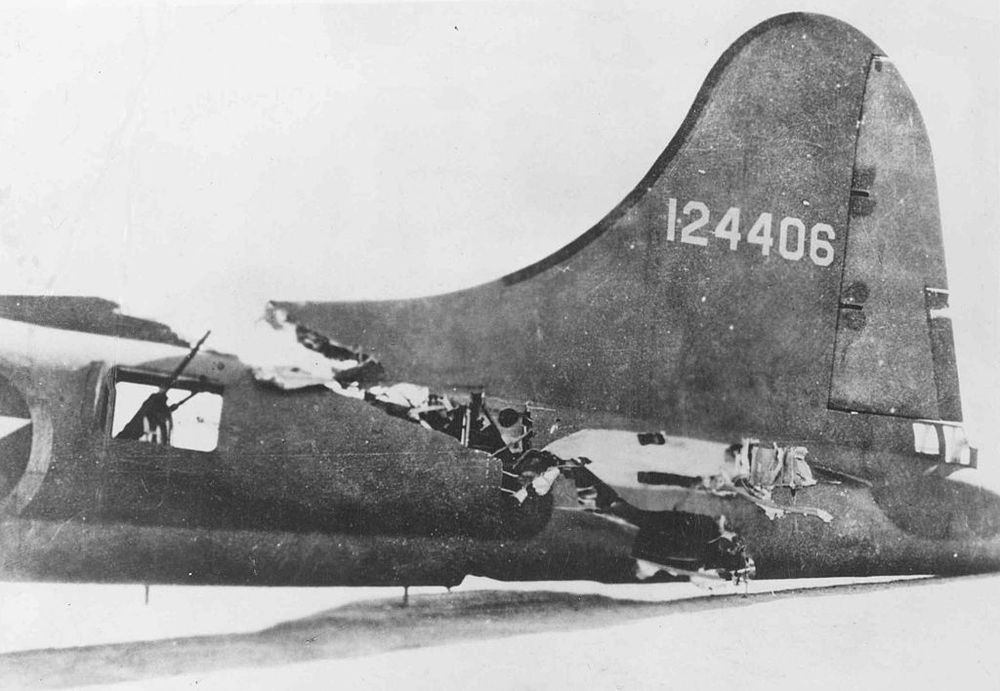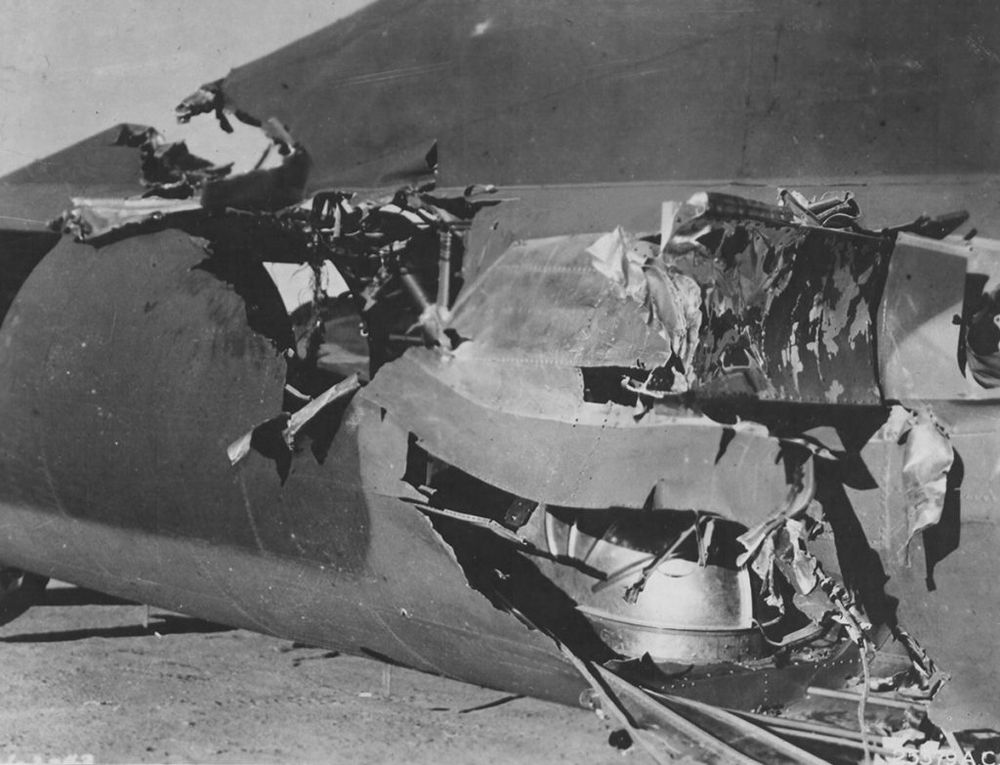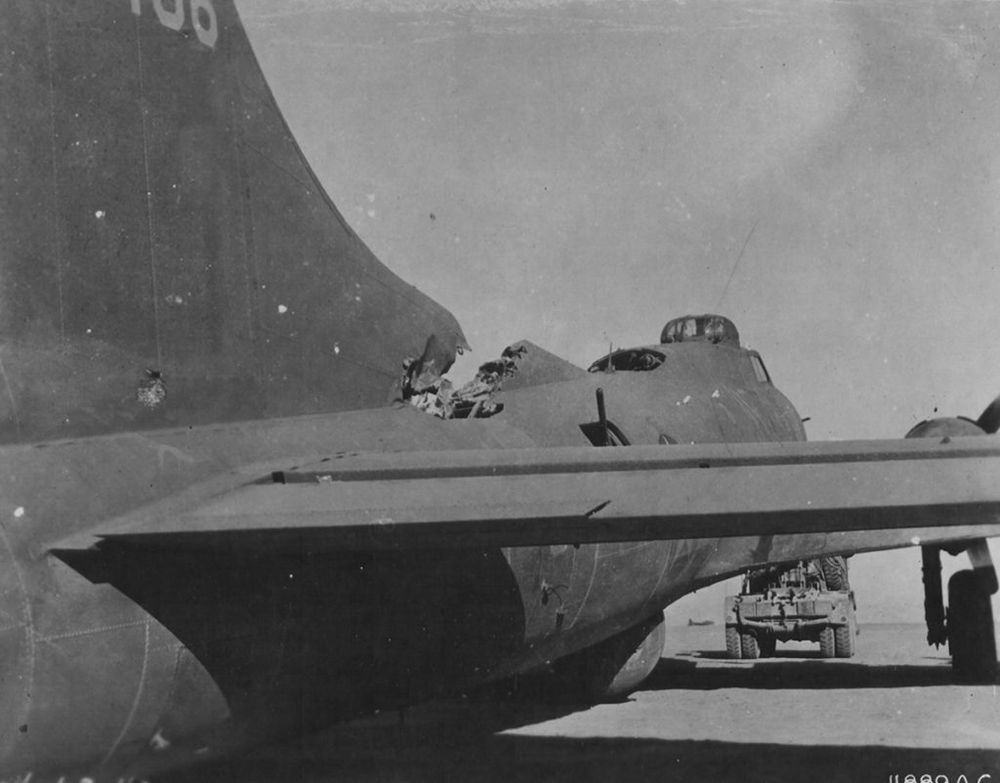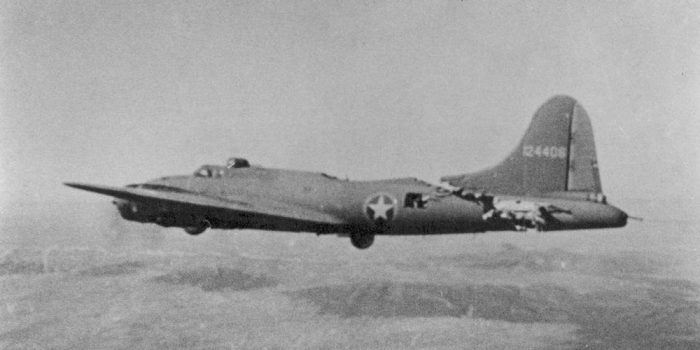The world wars were an era full of stories that turned into legends and which are today read and told with awe around the globe. The stories of brave fighters or gallant survivors all tend to inspire us in different ways.
One such story is of the All American B – 17 Flying Fortress. A story of grit, resolve, and faith. It is revered as one of all times epics in aerial combat and airmanship. The North African campaign was one of the hardest for the allies lead by the dessert fox General Erwin Romell. Nonetheless, the vigor and resolve of the allies made them victorious. The picture depicts just that, a B – 17 with its tail section severed but still kept flying. It was taken during World War 2, towards the end of the North African campaign.
The tale behind this photograph is a fascinating one. The severed soaring bird was named “All American” and belonged to the 97th Bomb Group, 414th Bombardment Squadron of the United States Air Force.

The All American, on February 1, 1943, along with other bombers, took off from their base near Biskra, in Algeria, to inflict fatal casualties upon the German sea support and communications. After wreaking havoc on the German ports, they were on their way back to their base when the Luftwaffe launched a counter-offensive, and the bombers were within no time in a dog fight. It was literally a do or die situation.
The All American was attacked right after the lead bomber was compromised. The bombers’ machine-gun fire downed the lead fighter of the German Airforce, but the second, in a suicidal yet courageous move, pressed its head-on attack against the All American. The crew of the All Americans believed they had shot the pilot of the German aircraft. They were fatally mistaken. The fighter crashed into the tail section of the All American, leaving a sizeable diagonal void and ripping off the left horizontal stabilizer. The tail section remained intact with the All American merely by a few pieces of metal from the fuselage. Astonishingly, the crew remained unscathed.

Kenny Bragg, the pilot of the All American, recollected, “I rammed the controls forward in a violent attempt to avoid collision… I flinched as the fighter passed inches over my head, and then I felt a slight thud like a coughing engine. I checked the engines and controls. The trim tabs were not working. I tried to level All American, but she insisted on climbing. It was only by the pressure from knees and hands that I was able to hold her in anything like a straight line. With the help of Bragg’s adept flying, the All American managed to return to base and landed safely without a functional tail wheel.

The fighter aircraft was repaired and returned to service; fortunately, it never went into active battle again. Instead, the veteran machine was assigned the role of a “station hack”— a utility airplane for routine activities such as delivering spare parts, equipment, or documents for the air force.
Inspired by this terrifying incident, the 414th bomber squadron changed their unit song “Comin’ in on a Wing and a Prayer.” This song, in particular, became immensely popular during the war as it symbolized American resolve and determination on the ground.
The All American’s services were soon after not required as it became an obsolete aircraft after being replaced with the B – 24s. The All American was abandoned in March 1945, but its heroics in the war will stay for a long time.


